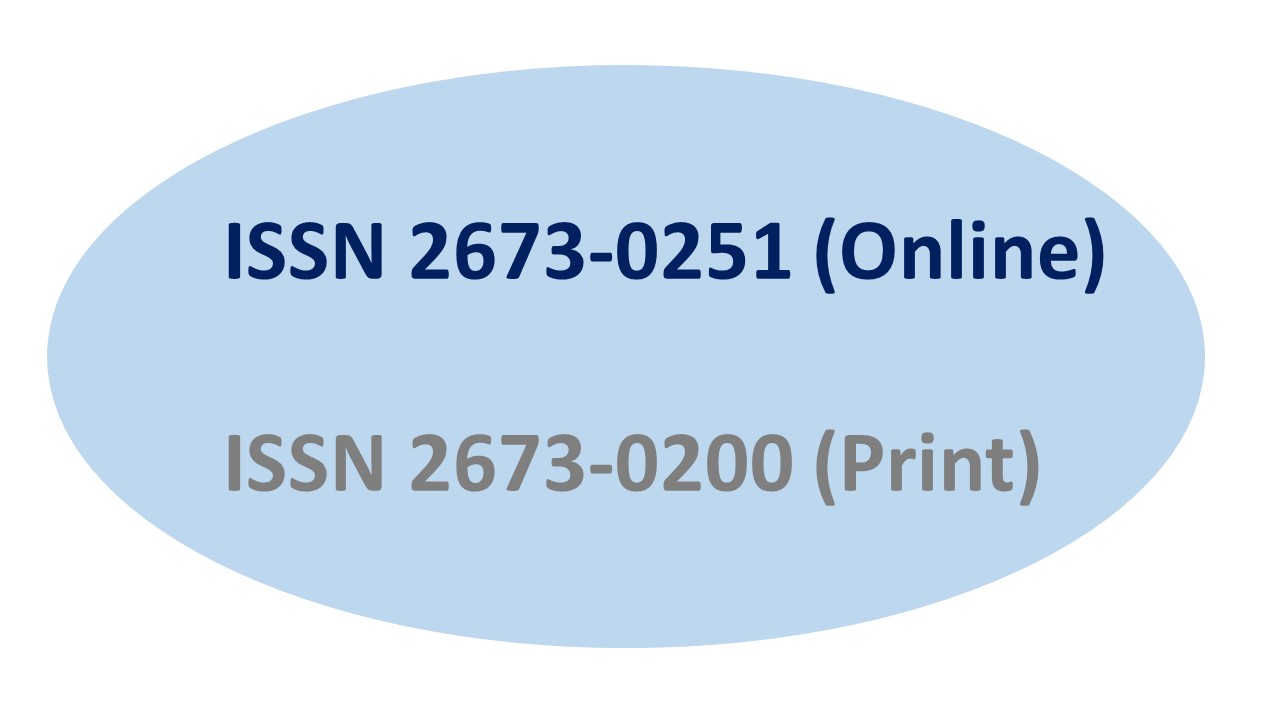Factors associated with Access to Sexual and Reproductive Health Services during COVID-19 Pandemic among Female Immigrant Workers in Thailand
Keywords:
Sexual and reproductive health, female migrant workers, access to health care, migrant healthAbstract
The COVID-19 pandemic has significantly impacted Samut Sakhon in Thailand, home to the second-highest number of migrant workers from Myanmar. This has led to decreased contraceptive access, unsafe abortions, postponed procedures, decreased sexual health education, gender-based violence, mental health issues, and increased unintended pregnancies. This cross-sectional study aimed to explore factors associated with access to sexual and reproductive health (SRH) services among female migrant workers (FMWs) from Myanmar in Samut Sakhon, Thailand, who were recruited by purposive sampling. The data were collected through a questionnaire from May to July 2021. Descriptive statistics, ANOVA, and ANCOVA were used to analyze the data. More than half of Myanmar FMWs in our study did not receive SRH services from public hospitals (60.78%), or private clinics or hospitals (63.38%). Furthermore, most of them cannot read and write Thai (84.77%). The factors associated with access to SRH services were marital status (P<0.05), education (P<0.05), monthly income (P<0.001), and daily expenses (P<0.05). The important finding indicated that the top three reasons that participants chose not to use SRH services were: services were available only during working hours (54.32%), unfriendly healthcare workers (40.00%), long distance to the health center, and difficulty traveling to the health center (35.45%). Access to SRH services is limited among Myanmar FMWs due to their education level, monthly income, and daily expenses. Our recommendations to overcome these barriers should include having friendly healthcare workers, free services, and services available after working hours. Additionally, SRH clinics should be in or near migration sites to allow for easy transportation.
References
Bukhari SA(2021). Sample Size Determination Using Krejcie and Morgan Table. DOI: 10.13140/RG.2.2.11445.19687
Chatchawalchanchanakit P & Apornpisal P. (2017). The feature of factor affecting access to health service of Myanmar Transnational worker: A case study of Thai seafood processing industry in Samut Sakhon Province. Journal of MCU Social Science Review, 6.2 (4): 645-658.
Country Office for Thailand WHO. (2013). Migration and health service system in Thailand: situation, responses, and challenges in a context of AEC in 2015: World Health Organization and European Union.
Foreign Workers Administration Office. (2020). Statistics on foreigners who are allowed to work throughout the kingdom. Bangkok: Information Department a0bf3232bdb42f5fe6dbe66cfa75b02c.pdf (doe.go.th)
Harkins B. (2019).Thailand Migration Report 2019. Bangkok: United Nations Thematic Working Group on Migration in Thailand.
Health Education Division. (2014). Health Literacy Scale for Unwanted Pregnancy Prevention of Thai Female Adolescents. Nonthaburi: Ministry of Public Health.
Khamthanet R & Suthutvoravut S. (2020). Comparison of Knowledge, Attitude, and Behavior of Reproductive Health Between Thai and Immigrant Women Workers in Factories in Samut Sakhon, Thailand. Rama Med J, 43(1):24-34.
Kumar AX, Tresise CB, Compas C & Murphy AM. (2018). Overview of Internal Migration in Thailand. In: Vize S, editor. Internal migration in Southeast Asia: Towards Better Inclusion of Internal Migrants: IOM, UN-ACT, UN-Habitat, and UNDP.
Labour Department Samut Sakhon Province. (2020). Labor Situation Report in Samut Sakhon Province Quarter 2 of the Year 2020.
McMichael C & Healy J. (2017). Health equity and migrants in the Greater Mekong Subregion. Glob Health Action, 10(1):1271594.
Meherall, Salima, et al. (2020). Barriers to and facilitators of South Asian immigrant adolescents' access to sexual and reproductive health services in Canada: A qualitative study. The Canadian Journal of Human Sexuality. Retrieved February 25, 2023 from https://www.researcher-app.com/paper/8282127.
Niramit R. & Phompukping B.(2019).Factors Affecting Access to Health Services of Female Laos’s Sex and Service Workers at The Border Ubon Ratchathani Province. 21(2): 78-95.
Satawedin P. (2014). Health communication issues among migrant workers in Thailand: A systematic review for health communication practices. BU Academic Review, 16(1):87-100.
Songchai T. (2020). Body of Knowledge about Translational Migrant and Health: The Result of Research Synthesis of Translational Migrant Labour in Thailand. Thai Journal of Health Education, 43(2):1-17.
Sricharoen T. (2020). Migration in the Mekong Subregion: Route from Myanmar Cambodia and Lao to Thailand and Social Welfare Arrangement. London Journal of Research in Humanities and Social Sciences, 20(8):31-50.
Suphanchaimat, Rapeepong, et al. (2021). Predicted Impact of Vaccination and Active Case-Finding Measures to Control Epidemic of Coronavirus Disease 2019 in a Migrant-Populated Area in Thailand. Risk Management and Healthcare Policy, 14: 3197.
Tangcharoensathien V, Patcharanarumol W, Kulthanmanusorn A, Saengruang N & Kosiyaporn H. (2019). The Political Economy of UHC Reform in Thailand: Lessons for Low- and Middle-Income Countries. Health systems and reform, 5(3):195-208.
Tangcharoensathien V, Thwin AA & Patcharanarumol W. (2017). Implementing health insurance for migrants, in Thailand. World Health Organization, 95(2):146-51.
Thein, Shwe Sabai & Thepthien, Bang-on. (2020). Unmet need for family planning among Myanmar migrant women in Bangkok, Thailand. British Journal of Midwifery, 28.3: 182-193.
Thongmixay, Souksamone, et al. (2019). Perceived barriers in accessing sexual and reproductive health services for youth in Lao People’s Democratic Republic. PLoS One, 14.10: e0218296.
Tousaw E, La RK, Arnott G, Chinthakanan O & Foster AM. (2017). "Without this program, women can lose their lives": migrant women's experiences with the Safe Abortion Referral Programme in Chiang Mai, Thailand. Reproductive health matters, 25(51):58-68.
UNFPA Asia and the Pacific Regional Office. (2011). Socio-Cultural Influences on the Reproductive Health of Migrant Women: A Review of Literature in Cambodia, Lao PDR, Thailand, and Viet Nam. Bangkok: UN service building.
Webber G, Spitzer D, Somrongthong R, Dat TC & Kounnavongsa S. (2012).Facilitators and barriers to accessing reproductive health care for migrant beer promoters in Cambodia, Laos, Thailand, and Vietnam: A mixed-methods study. Globalization and Health, 8(1):21.

Downloads
Published
Issue
Section
License
Copyright (c) 2023 International Journal of Public Health and Health Sciences

This work is licensed under a Creative Commons Attribution-NonCommercial-NoDerivatives 4.0 International License.
If the manuscript is accepted for publication, copyright of the article shall be assigned to the IJPHS. After acceptance of a manuscript, the authors will be requested to complete a copyright transfer agreement form






